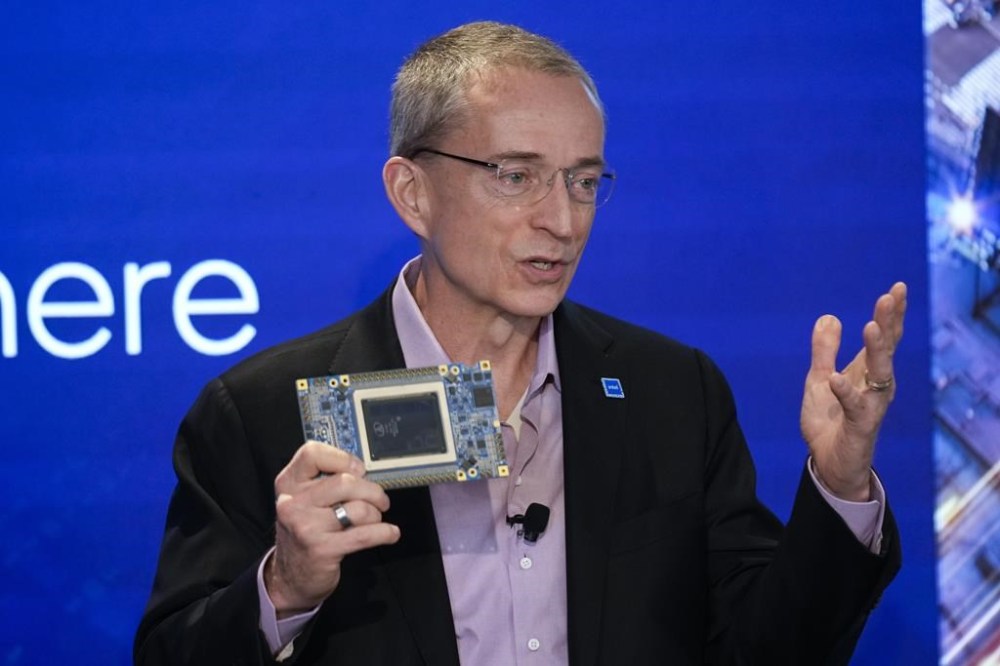Intel CEO Gelsinger retires; Zinsner and Johnston Holthaus named interim co-CEOs
Advertisement
Read this article for free:
or
Already have an account? Log in here »
To continue reading, please subscribe:
Monthly Digital Subscription
$0 for the first 4 weeks*
- Enjoy unlimited reading on winnipegfreepress.com
- Read the E-Edition, our digital replica newspaper
- Access News Break, our award-winning app
- Play interactive puzzles
*No charge for 4 weeks then price increases to the regular rate of $19.00 plus GST every four weeks. Offer available to new and qualified returning subscribers only. Cancel any time.
Monthly Digital Subscription
$4.75/week*
- Enjoy unlimited reading on winnipegfreepress.com
- Read the E-Edition, our digital replica newspaper
- Access News Break, our award-winning app
- Play interactive puzzles
*Billed as $19 plus GST every four weeks. Cancel any time.
To continue reading, please subscribe:
Add Free Press access to your Brandon Sun subscription for only an additional
$1 for the first 4 weeks*
*Your next subscription payment will increase by $1.00 and you will be charged $16.99 plus GST for four weeks. After four weeks, your payment will increase to $23.99 plus GST every four weeks.
Read unlimited articles for free today:
or
Already have an account? Log in here »
Hey there, time traveller!
This article was published 02/12/2024 (338 days ago), so information in it may no longer be current.
Intel CEO Pat Gelsinger has retired, the struggling chipmaker said Monday in a surprise announcement.
Two company executives, David Zinsner and Michelle Johnston Holthaus, will act as interim co-CEOs while the company searches for a replacement for Gelsinger, who also stepped down from the company’s board.
The departure of Gelsinger, whose career spanned more than 40 years, underscores the turmoil at Intel. The company was once a dominant force in the semiconductor industry but has been eclipsed by rival Nvidia, which has cornered the market for chips that run artificial intelligence systems.

Gelsinger started at Intel in 1979 and was its first chief technology officer. He returned to the company as chief executive in 2021.
Gelsinger said his exit was “bittersweet as this company has been my life for the bulk of my working career,” he said in a statement. “I can look back with pride at all that we have accomplished together. It has been a challenging year for all of us as we have made tough but necessary decisions to position Intel for the current market dynamics.”
Zinsner is executive vice president and chief financial officer at Intel. Holthaus was appointed to the newly created position of CEO of Intel Products, which includes the client computing, data center and AI groups.
Frank Yeary, independent chair of Intel’s board, will become interim executive chair.
“Pat spent his formative years at Intel, then returned at a critical time for the company in 2021,” Yeary said in a statement. “As a leader, Pat helped launch and revitalize process manufacturing by investing in state-of-the-art semiconductor manufacturing, while working tirelessly to drive innovation throughout the company.”
Gelsinger’s departure comes as Intel’s financial woes have been piling up. The company posted a $16.6 billion loss and halted its dividend in the most recent quarter, and its shares have fallen by about 60% since he took over as CEO. Gelsinger announced plans in August to slash 15% of its huge workforce — or about 15,000 jobs — as part of cost-cutting efforts to to save $10 billion in 2025.
Nvidia’s ascendance, meanwhile, was cemented earlier this month when it replaced Intel on the Dow Jones Industrial Average.
Unlike some of rivals, Intel manufactures chips in addition to designing them. Under Gelsinger, the company has been working to build up its foundry business making semiconductors in the U.S. designed by other firms, in a bid to compete with rivals such as market leader Taiwan Semiconductor Manufacturing Co. or TSMC.
Intel has benefited from tens of billions of dollars that the administration has pledged to support construction of U.S. chip foundries and reduce reliance on Asian suppliers, which Washington sees as a security weakness.
After taking over as CEO, Gelsinger unveiled plans to build a $20 billion chipmaking facility in central Ohio, and poured billions more into expanding in Europe, where leaders were also worried about dependence on Asia.
The Biden administration had said it would give Intel up to $8.5 billion in federal funding for semiconductor plants around the country, but last week it trimmed that amount, according to three people familiar with the grant who spoke on the condition of anonymity.
Shares of the Santa Clara, California, company jumped in early trading Monday but ended the day down 0.5%.
___
AP Business Writer Kelvin Chan contributed to this report from London.

